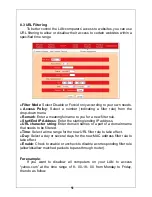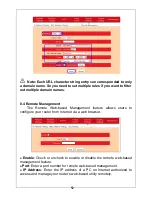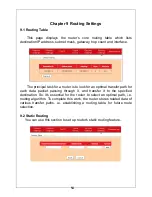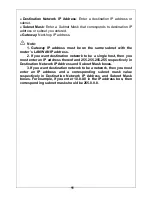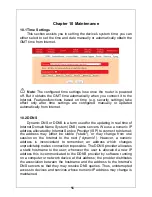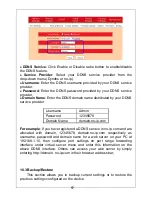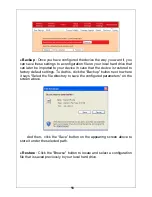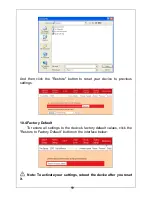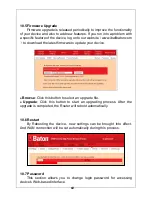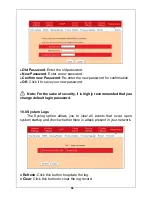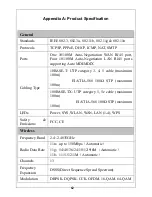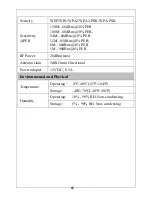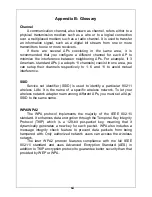
64
Appendix B: Glossary
Channel
A communication channel, also known as channel, refers either to a
physical transmission medium such as a wire or to a logical connection
over a multiplexed medium such as a radio channel. It is used to transfer
an information signal, such as a digital bit stream, from one or more
transmitters to one or more receivers.
If there are several APs coexisting in the same area, it is
recommended that you configure a different channel for each AP to
minimize the interference between neighboring APs. For example, if 3
American- standard APs (i.e. adopts 11 channels) coexist in one area, you
can setup their channels respectively to 1, 6 and 11 to avoid mutual
interference.
SSID
Service set identifier (SSID) is used to identify a particular 802.11
wireless LAN. It is the name of a specific wireless network. To let your
wireless network adapter roam among different APs, you must set all Aps’
SSID to the same name.
WPA/WPA2
The WPA protocol implements the majority of the IEEE 802.11i
standard. It enhances data encryption through the Temporal Key Integrity
Protocol (TKIP) which is a 128-bit per-packet key, meaning that it
dynamically generates a new key for each packet. WPA also includes a
message integrity check feature to prevent data packets from being
hampered with. Only authorized network users can access the wireless
network.
The later WPA2 protocol features compliance with the full IEEE
802.11i standard and uses Advanced Encryption Standard (AES) in
addition to TKIP encryption protocol to guarantee better security than that
provided by WEP or WPA.


